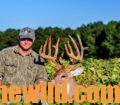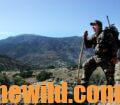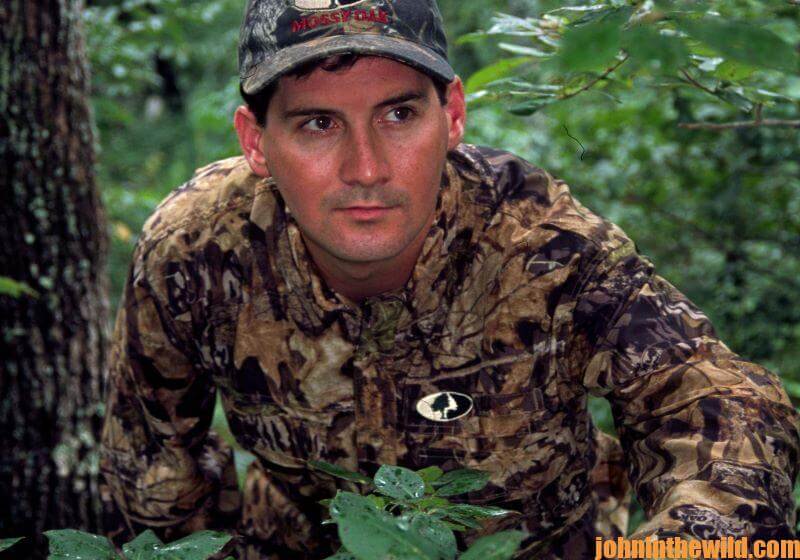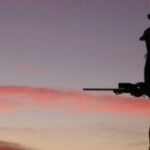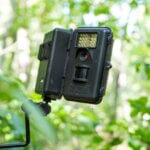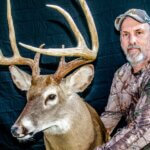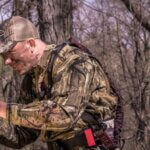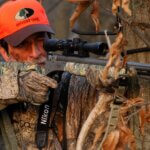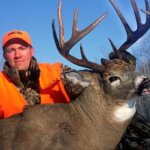Editor’s Note: To take one mature whitetail buck from public-hunting lands is a major accomplishment. But to consistently take older-age-class bucks on public lands in several states year after year, you must have an extraordinary game plan.
To take a buck with a composite score of 179 inches (the composite score uses the Boone and Crockett scoring system, which includes the number of inches between the main beams, and an official Buckmaster score of 163 inches that doesn’t include the number of inches between the main beams and only scores the amount of antlers that the public land deer carries is a super accomplishment.
So, Jacob Lamar of Athens, Alabama’s Kentucky buck is a buck of a lifetime. In the last almost two decades while hunting public lands in Illinois, Jacob has taken, nine older-age-class bucks. In 2015, he harvested a buck in Kentucky that scored 179 inches. He took two bucks in Tennessee off the same 70 acres – one scoring 138 inches and a second buck scoring 157-4/8 inches.
I wanted to know what hunting tactics Jacob had developed to take these big deer on public-hunting lands. Here Jacob tells us in his own words his public-land hunting strategies.

Adam and I decided to come back the next day (see Day 4) to the Land Between the Lakes’ land where we’d spotted the 170-inch buck, to put our trail cameras close to where we had seen the bucks leave the soybean field and at several other locations around the soybean field.
Since I had found the site where we had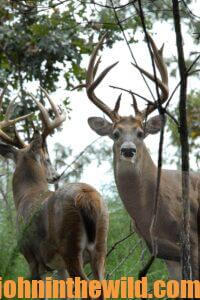 seen the big buck, Adam decided that he and I would continue to scout this area and check our trail cameras. On opening day of bow season, we’d make the hunt for the big buck. The other four hunters with us had two more groups of bachelor bucks spotted that had older-age-class bucks that they wanted to hunt. One of the bachelor groups had a buck that would score 150 inches or more.
seen the big buck, Adam decided that he and I would continue to scout this area and check our trail cameras. On opening day of bow season, we’d make the hunt for the big buck. The other four hunters with us had two more groups of bachelor bucks spotted that had older-age-class bucks that they wanted to hunt. One of the bachelor groups had a buck that would score 150 inches or more.
As opening day of the season drew closer, we decided not to hunt the areas we’d found until late in the afternoon, because that was when we had seen the deer feeding on the soybean fields.
On opening day at 11:00 am, Adam and I parked my truck and sat in the truck until about 2:00 pm. If anyone else came to that location, we planned to get out of the truck with our bows and start heading into the woods.
The first afternoon of the hunt, we saw one buck that we identified as part of the bachelor group coming down toward the soybean field just before dark. But instead of going straight to the soybean field, he went behind us and got a nose full of our human odor.
However, the buck wasn’t terrified. He just slowly moved away from us back into the woods. At dark, we could hear other deer coming down the trail. We assumed they were the other five bucks that were part of the bachelor group, because we never saw or got trail-camera pictures of any does or yearlings feeding in this little soybean field.
We listened as the bucks walked and fed farther out into the soybean field. Then slowly and quietly we came out of our stands, backed out of the woods and took the long way back to our truck.
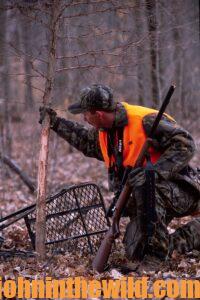
Our plan on the first afternoon hunt was for Adam to have his video camera with him. Then if the big buck came into the soybean field, he could video me taking the big buck.
But the next morning, September 5, 2015, we decided that Adam would sit in the stand where I had sat the evening before, and I’d move my stand to get closer to the trail that we’d heard the bucks using to go into the soybean field after dark.
With only about 45 minutes of daylight left in legal shooting time, the big buck came in and stopped only 20 yards from my stand. To get a shot, I had to stoop down in an awkward position. I loosed my arrow and saw it hit a little far back from where I was aiming. The buck kicked-up, jumped twice and was gone. I stayed in my stand.
Fifteen minutes later, I heard Adam, not 60-yards away, grunt. Then I heard the whack of an arrow hitting a deer. We both remained in our stands until black dark. I climbed out of my stand and went over to Adam’s stand. He told me, “I got a good one, but I don’t know exactly which way he went.” I explained, “I shot the big deer, but I hit him a little far back. Let’s get out of the woods, and allow those deer to lay down overnight. We’ll come back and look for them in the morning.”
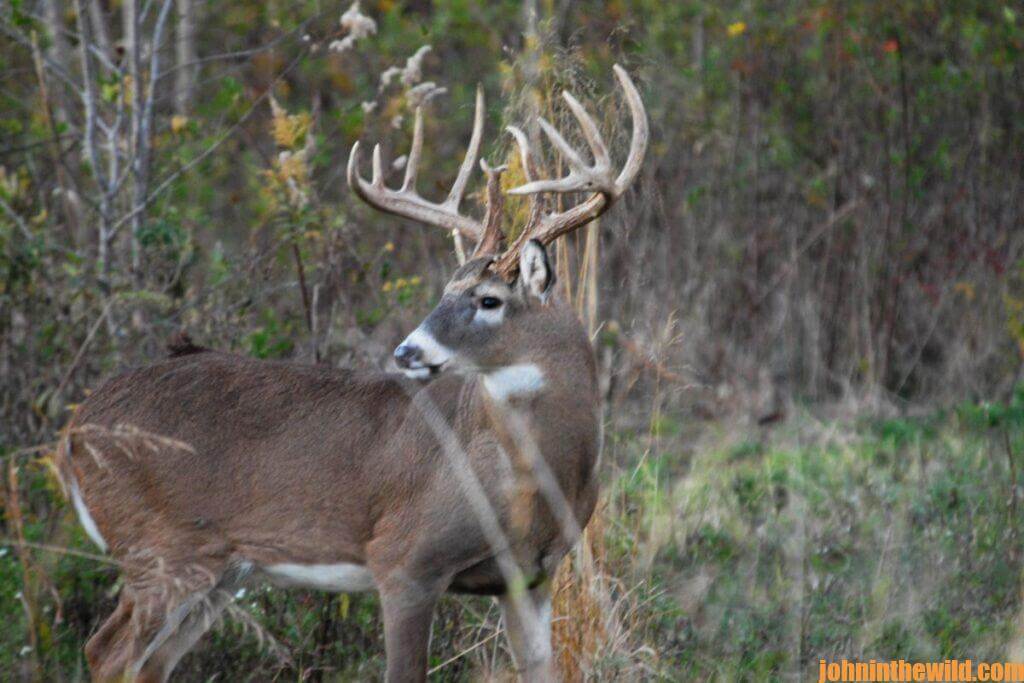
We found Adam’s buck- an 8-pointer that scored 131 inches – bright and early the next morning. We went to look for my deer, and he’d only gone about 40 yards. We dragged both deer out of the woods and headed south for Rogersville, Ala., to get the deer caped and in the cooler to be mounted.
My buck had a composite score of 179 and an official Buckmaster score of 163. This Kentucky buck was my buck of a lifetime.
When you use the links below to go to Amazon, notice on the left of the Audible option where Amazon says you can hear a sample that gives you 10% of these books for free! On the right side of the page for each book and below the offer for a free Audible trial, you can choose to Buy the Audible book.
Be sure to also check out John’s Free Books as our gift to you!
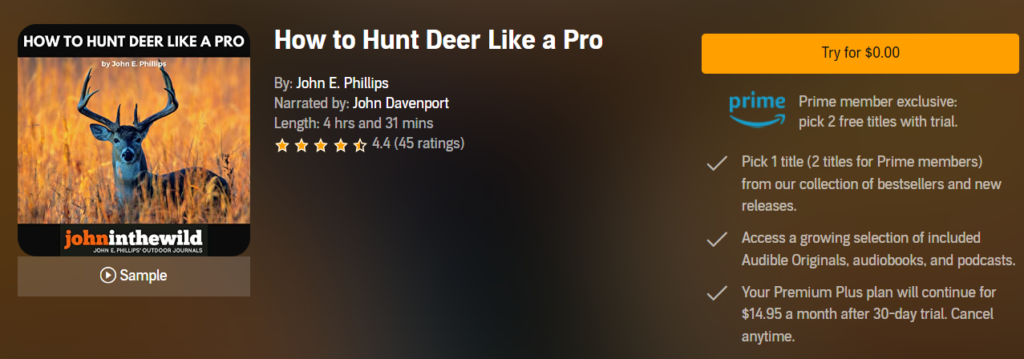
Prime Members: You’re eligible to claim 2 free titles with your 30-day Audible Premium Plus trial! Browse more than 100 of John E. Phillips’ expert guidebooks on hunting and fishing here.
Books By Topic
Category Shortcuts: View on Amazon
| Deer Hunting | Turkey Hunting | Elk Hunting | Bass Fishing |
| Mule Deer Hunting | Bowhunting | Bowfishing | Crappie Fishing |
| All Cookbooks | Hunting Cookbooks | Fishing Cookbooks | All Audible Books |

How to Hunt and Take Big Buck Deer on Small Properties
In this book, you’ll hear from 14 hunters who either have gained permission or leased properties as small as six acres to as much as 250 acres, and how they consistently take older-age-class bucks off these little lands.
VERSIONS: AUDIBLE, KINDLE & PRINT

Jim Crumley’s Secrets of Bowhunting Deer
Using a black magic marker and a gray work jumpsuit, Jim Crumley of Buchanan, Virginia, drastically changed the nature and purpose of hunting camouflage when he created the first sportsman’s camouflage – Trebark. Crumley’s love of bowhunting and his desire to be more invisible changed hunting clothing forever.
In this hunting guide, he shares the wisdom that he’s learned throughout his lifetime about how to be a hunter, how to find a deer lease, how to scout for deer, and more.
Special features include how to:
- Have a magic 60 acres to hunt
- Decide the best equipment to use
- Find deer year-round
- Locate land to hunt
- Know the best place to put your tree stand
- Get bucks within bow range
VERSIONS: AUDIBLE, KINDLE & PRINT

How to Hunt Deer Like a Pro
How do you know if the land you hunt has a trophy deer on it? Wildlife manager Bob Zaiglin, of Uvalde, Texas and Jim Crumley, the father of modern-day hunting camouflage, tells you how to find out. GPS can make finding and taking that trophy buck easier. This hunting guide will teach you how to hunt big bucks where no one else can find them, how to call deer, and how to become versatile as a deer hunter, so that if one deer tactic doesn’t work, another one will.
In the chapter, “How to find Bucks at Scrape,” Dr. Keith Causey, retired professor of Wildlife Science at Auburn University, describes the best way to hunt a scrape.
Brad Harrison of Neosho, Missouri, is a nationally-known videographer, professional deer hunter and master at calling deer. Another master is Will Primos of Primos Game Calls. These two experts will tell the best deer calls and when to use them in this book.
And for over 20 years, Bo Pitman, lodge manager of White Oak Plantation, has been studying deer movement patterns. He explains what types of conditions are best for predicting deer movement.
VERSIONS: AUDIBLE, KINDLE & PRINT

Deer hunting and deer hunters are drastically changing each year. To learn new techniques for hunting deer and have more places to hunt, I’ve interviewed some of the best deer hunters in the nation and share their tactics in How to Hunt Deer Like a Pro: Volume II.
In Chapter 10, Jacob Lamar tells you his tactics for consistently taking older-age-class bucks on public lands in several states. Chapter 11, Bob Walker explains how to find places on public lands where you can hunt that 99 percent of the other hunters never have considered hunting. The Bonus Chapter with David Ramey tells you how, where, when and with what equipment to take big Kansas bucks on public lands by hunting in 100-degree weather when others won’t hunt.
Chapter 13, Mark Drury, his family and his guests take mature bucks every season by having more small places to hunt rather than one large property. Drury explains the strategy of having satellite farms to hunt that only may be 50-150 acres each or less. Chapter 15, Pat Reeve, who hunts far-northern states and Canada, says, “I don’t like hunting for mature bucks until the weather is 20 degrees or less.” Chapter 4, Dr. Larry Marchinton says that funnels are the most-reliable stand sites to hunt for big bucks and tells why.
VERSIONS: AUDIBLE & PRINT

